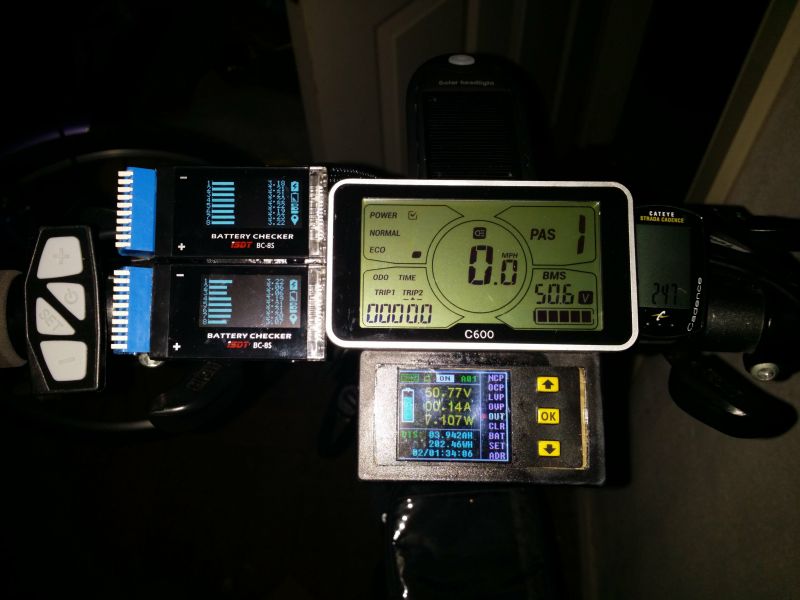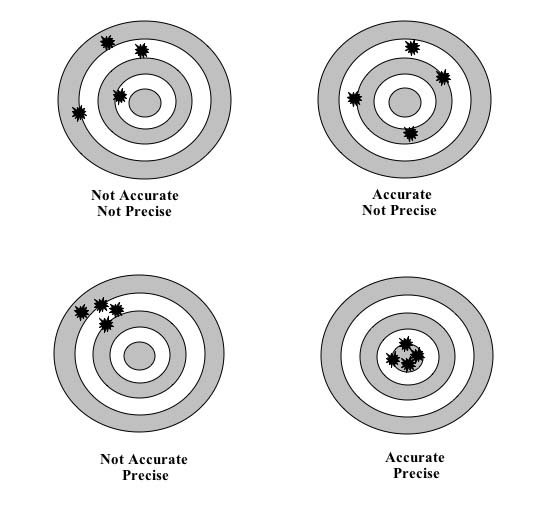^^

...Anyway,
I have received and installed 2x 8s individual LiFe cell monitors, as well as a proper charge/discharge capacity monitor:
As expected, the 2 battery monitors use battery voltage to gauge battery capacity, and show it in a bar graph as well as the actual voltage. These do a good job for that purpose. I have soldered dip switches in-line so as not to cause battery drain when in storage.
I also obtained a touch screen 1-6s LiFe charger for properly charging individual cells:
[youtube]JIXxTHllUrQ[/youtube]
Using this setup, I fully charged the battery pack and ensured balance, and then drained it to BMS automatic cut-off. The charge meter showed ~15Ah of drain at this stage. The individual cell meters showed that indeed the punctured cell at #12 was the culprit at 2.2v with every other cell still retaining good charge of ~3.3v.
Great, so now we know the charge capacity of the punctured cell. But what about the remaining cells, and especially the cell that we replaced at #2?
I then individually charged cell # 12 by ~5Ah, and left the apparatus to drain again.
The picture itself is of the pack about to be depleted after ~19-20Ah total discharge (showing ~4Ah on the drain meter after being cut-off and reset at 15Ah). As hypothesised, the replaced battery #2 is working very well, having been drained the full ~20Ah, as well as, surprisingly, every other cell. The picture shows that cells #10, 11, 15, have the lowest capacity, and will soon cause the BMS to shut down the power supply.
So, through our investigation the following observations and conclusions can been made:
--The original 16s "20Ah" battery pack had an actual charge capacity of ~5Ah due to cell #2.
--Replacing Cell #2 gave us a capacity of ~15Ah, cut short by punctured cell #12.
--Charging punctured cell #12 by ~5Ah allowed a further battery drain of ~5Ah, meaning that aside from Cells #2 and #12, the pack could indeed hold a 20Ah charge.
--Charging voltage does have a significant impact on the use of voltage to indicate remaining charge. Professional charge level indicators are designed to be used to measure the voltage to show the remaining charge as long as all cells were charged with the same charge-voltage. They offer good results, as shown by the 2x 8s LCD screens to the left.
My personal conclusion is that I shall keep an eye on cell #12. If you recall, I had sealed the puncture, so hopefully, further damage has been stopped. If capacity of this cell continues to decline further than 15Ah, I shall replace this cell as well, leaving us with a 20Ah capacity, if and when required.
All in all, we have gone from 5Ah capacity to a 15Ah Capacity by replacing a bad cell at the cost of ~$25. We have also investigated and found that we can further maximise capacity to 20Ah by replacing the #12 cell as and when needed for another ~$25. Of course, this all assumes that the cells won't degrade down the line.
Conclusions regarding overall thread:
1. Don't buy cheap battery packs from China - they are more trouble than they are worth. However, buying individual cells and building your own pack after testing individual cells is good value.
2. If you take the chance, immediately test for capacity, and return to obtain refund at the slightest sign of trouble.
3. It is a good idea to install both a charge meter as well as an individual cell meters for close observation of the cells. This will eliminate any guess-work, and will warn you of problems well in advance to minimise down-time (shipping from china can take up to a month or more).
I'd be happy to answer any questions or do further investigation if anyone is curious about something else.






